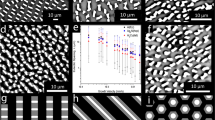Abstract
Many real objects are heterogeneous. They are composed of diverse materials, which are present in varying proportions. Materials inside the solid do not have to be uniformly distributed. So, methods capable of accurately model not only the boundary of the solid, but also the distribution of material in every single point of its interior, are needed. In this paper we propose a new framework for modeling heterogeneous objects. The framework is comprehensive as it characterizes precisely heterogeneous objects, defines an adequate mathematical model that captures the essence of such objects, and a computational representation to represent the modeled objects in a computer. Our framework is based on Béziér hyperpatches and solves the main problems of this mathematical tool. We have implemented it completely in order to check whether it is possible to precisely model real objects.






















Similar content being viewed by others
References
Casale, M., Stanton, E.: An overview of analytic solid modeling. IEEE Comput. Graph. Appl. 5(2), 45–56 (1985). doi:10.1109/MCG.1985.276402
Conde Rodriguez, F.A., Torres Cantero, J.: A simple validity condition for b-spline hyperpatches. In: Proceedings of Eurographics, 2001, short presentations (2001)
Hua, J., He, Y., Qin, H.: Multiresolution heterogeneous solid modeling and visualization using trivariate simplex splines. In: ACM Symposium on Solid Modeling and Applications, SM, pp. 47–58 (2004)
Hua, J., He, Y., Qin, H.: Trivariate simplex splines for inhomogeneous solid modeling in engineering design. J. Comput. Inf. Sci. Eng. 5(2), 149–157 (2005). doi:10.1115/1.1881352
Jackson, T., Liu, H., Patrikalakis, N., Sachs, E., Cima, M.: Modeling and designing functionally graded material components for fabrication with local composition control. Mate. Des. 20(2–3), 63–75 (1999). doi:10.1016/S0261-3069(99)00011-4
Kou, X., Tan, S.: Heterogeneous object modeling: a review. CAD Comput. Aided Des. 39(4), 284–301 (2007). doi:10.1016/j.cad.2006.12.007
Kumar, V., Dutta, D.: An approach to modeling and representation of heterogeneous objects. J. Mech. Des. Trans. ASME 120, 659–667 (1998). doi:10.1115/1.2829329
Lasser, D.: Bernstein-bézier representation of volumes. Comput. Aided Geom. Des. 2(1–3), 145–149 (1985). doi:10.1016/0167-8396(85)90018-4
Mantyla, M.: An Introduction to Solid Modeling. Computer Science Press, College Park, MD (1988)
Mortenson, M.E.: Geometric Modeling. Wiley, New York (1985)
Ochiai, K.: Tire for motorcycle. Sumitomo Rubber Industries, Ltd. In: Kobeshi (JP) Assignee. US Patent 7,201,198 (2007)
Qian, X., Dutta, D.: Physics-based modeling for heterogeneous objects. J. Mech. Des. Trans. ASME 125(3), 416–427 (2003). doi:10.1115/1.1582877
Requicha, A.G.: Representations for rigid solids: theory, methods, and systems. ACM Comput. Surv. 12(4), 437–464 (1980). doi:10.1145/356827.356833
Schmitt, B., Pasko, A., Schlick, C.: Constructive sculpting of heterogeneous volumetric objects using trivariate b-splines. Vis. Comput. 20(2–3), 130–148 (2004). doi:10.1007/s00371-003-0236-9
Warkhedkar, R., Bhatt, A.: Material-solid modeling of human body: a heterogeneous b-spline based approach. CAD Comput. Aided Des. 41(8), 586–597 (2009). doi:10.1016/j.cad.2008.10.016
Yang, P., Qian, X.: A b-spline-based approach to heterogeneous objects design and analysis. CAD Comput. Aided Des. 39(2), 95–111 (2007). doi:10.1016/j.cad.2006.10.005
Acknowledgments
This work has been partially funded by the Spanish Ministry of Economy and Competitiveness through Grants TIN2014 58218-R and TIN2014-60956-R with ERDF funds.
Author information
Authors and Affiliations
Corresponding author
Rights and permissions
About this article
Cite this article
Conde-Rodríguez, F., Torres, JC., García-Fernández, ÁL. et al. A comprehensive framework for modeling heterogeneous objects. Vis Comput 33, 17–31 (2017). https://doi.org/10.1007/s00371-015-1149-0
Published:
Issue Date:
DOI: https://doi.org/10.1007/s00371-015-1149-0




